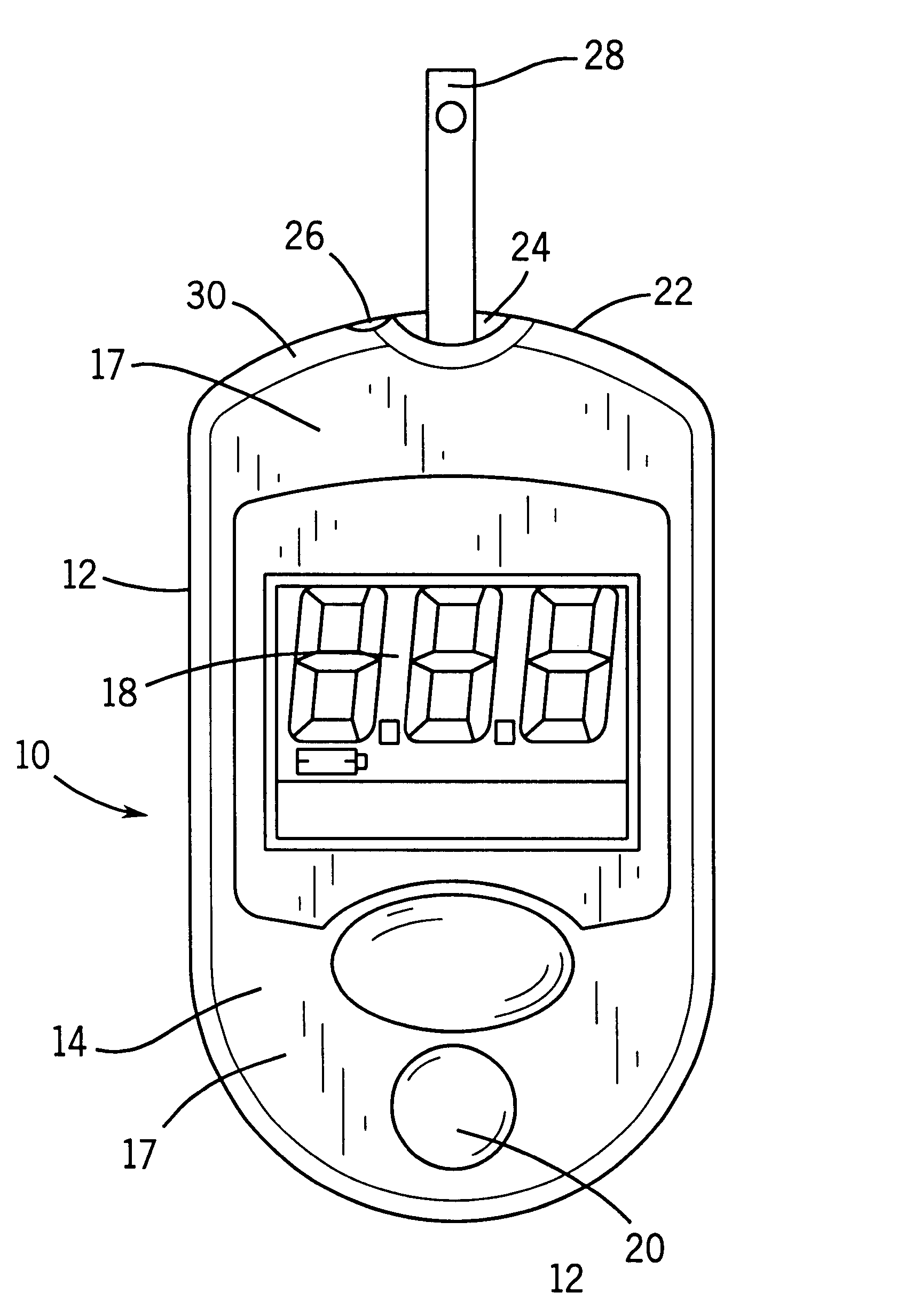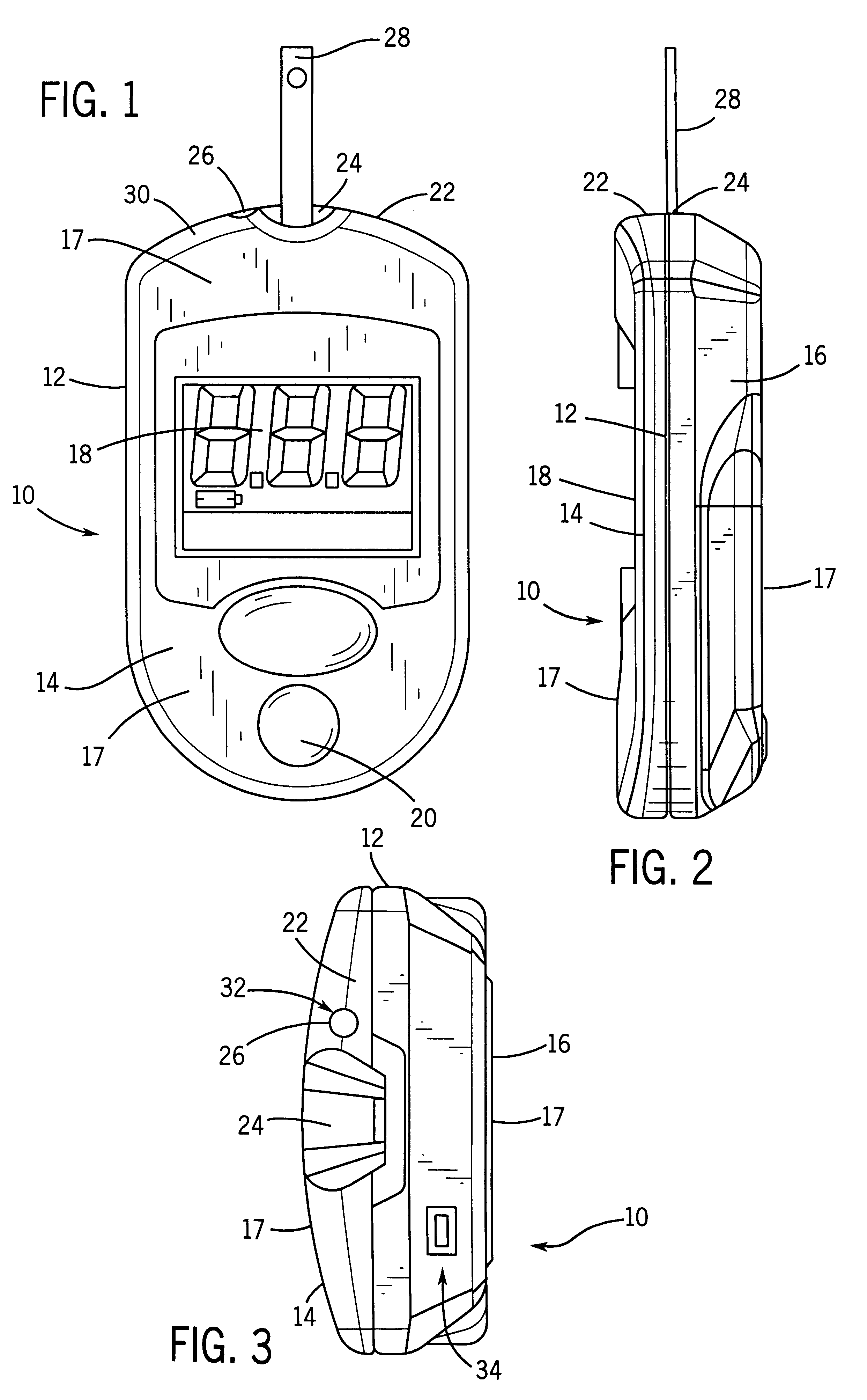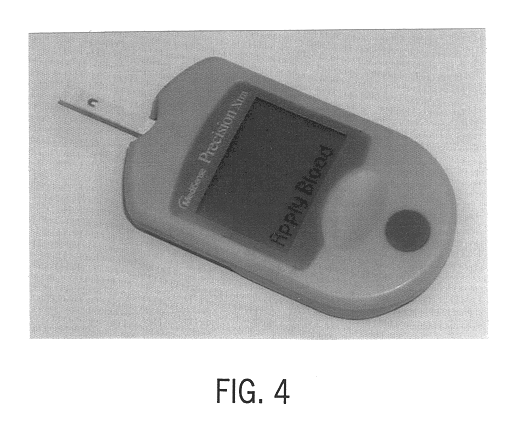Luminous glucose monitoring device
- Summary
- Abstract
- Description
- Claims
- Application Information
AI Technical Summary
Benefits of technology
Problems solved by technology
Method used
Image
Examples
Embodiment Construction
This example illustrates a formulation for preparing the housing 12 of the glucose monitoring device of this invention. Phosphorescent pigments can be mixed in a powdered resin, preferably a transparent powdered resin, such as, for example, polyethylene tetrafluorethylene, polymethylmethacrylate, epoxy resin, polyvinyl chloride. Other resins suitable for use in this invention include blends of resins, such as, for example, the blends PPG / PPB, PEG / PEB, and ABSG / ABSB. Phosphorescent pigments suitable for this invention include those available from Global Trade Alliance (Scottsdale, Arizona), such as those designated PLO (yellow-green color) and SB-8 (blue color). However, yellow-green is preferred for mixing in a polymeric material. The concentration of pigment to be used preferably ranges from about 1% to about 40%, more preferably from about 5% to about 20%, by weight of pigment.
The size of the pigment particles is preferably C size (20 to 40 .mu.m) or D size (10 to 15 .mu.m), more ...
PUM
 Login to View More
Login to View More Abstract
Description
Claims
Application Information
 Login to View More
Login to View More - R&D
- Intellectual Property
- Life Sciences
- Materials
- Tech Scout
- Unparalleled Data Quality
- Higher Quality Content
- 60% Fewer Hallucinations
Browse by: Latest US Patents, China's latest patents, Technical Efficacy Thesaurus, Application Domain, Technology Topic, Popular Technical Reports.
© 2025 PatSnap. All rights reserved.Legal|Privacy policy|Modern Slavery Act Transparency Statement|Sitemap|About US| Contact US: help@patsnap.com



